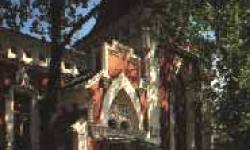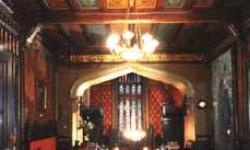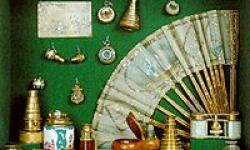The A. A. Bakhrushin. State Central Theatre Museum (the former Literary-Theatre Museum of the Imperial Academy of Sciences) in Moscow, Central Federal District, keeps a unique collection of theatre relics of Russia. Here one may see the history of all lands and genres of theatre art from the beginning to recent times. Almost 1 500 000 exhibits are kept in the reserves of the Museum, those are archives of theatre personalities, portraits of eminent actors, singers, producers, dramatists, ballet-masters, dancers, composers, painters; costumes, personal belongings and properties; set designs and sketches made by great masters of scenery, posters and programmes, photographs of artists and performances, rare books devoted to theatre art, video- and cine-documents, articles of the theatre daily life - all that keeps the memory of the theatre performance.
Aleksey Aleksandrovich Bakhrushin, who collected all these precious treasures, was born in a merchant family. In the 1890s A.A.Bakhrushin started gathering his theatre collection and this became his main occupation.
The day of October 29, 1894 when all those interested could get acquainted with his collection, became the birthday of the first Museum of a new type in the whole world, A.A.Bakhrushin State Central Museum, forerunner of the contemporary theatre, literary and music Museums in Russia as well as in many other countries.
A.A. Bakhrushin placed the Museum in his estate in Zamoskvorechye (district beyond the Moscow river), one of the picturesque corners in Moscow, Central Federal District. Here in 1896 he built up the main Museum premises designed by architect K. Gippius. The founder of the Museum bought the neighbouring land and transformed his estate in one of the most interesting sights in Moscow, Central Federal District, which his contemporaries used to call "The Theatre Versailles in Zatsepa (area in Southern Moscow)". In 1913 A.A. Bakhrushin gave his Museum, A.A.Bakhrushin State Central Museum, and estate to the city of Moscow and handed them over to the Imperial Academy of Sciences. For this gift to the city he was awarded the decoration of St. Vladimir (Fourth degree) which meant the hereditary nobility title, and promoted to the rank of a civilian general. In the 1930s the city arthorities took away a large part of A.A. Bakhrushin's estate and transferred it to the "organizations in need". Now the Museum occupies less than a half of the former estate. Nearly all the interior of the premises disappeared and now only photographs can give us an idea about the estate of A.A. Bakhrushin. The entrance-hall of the building keeps its original shape.



A.A.Bakhrushin State Central Museum reviews
Login to comment